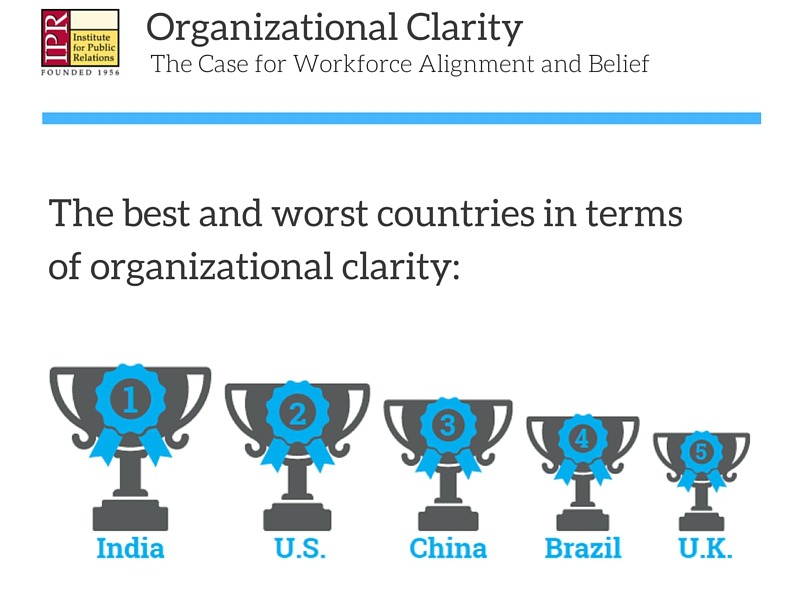Holmes Report 15 May 2016 // 6:04PM GMT

Organizations are failing to provide a complete “line-of-sight” to employees, according to the first global study on Organizational Clarity, produced by the Institute for Public Relations Commission on Organizational Communication. The study, “Organizational Clarity: The Case for Workforce Alignment and Belief,” indicates employees in the five countries examined are confident they understand the core purpose of their organization and find meaning in their work, but believe organizations have much work to be done in prioritizing and communicating strategy internally.
More than 1,500 employees in five countries—the United States, United Kingdom, India, Brazil and China—were surveyed about how well they think their organization connects to three dimensions in terms of employee alignment: job, strategy and market. Each country received a grade ranging from “A” to “F,” based on the mean responses from their employees. The best to worst performing countries in terms of Organizational Clarity were India, United States, China, Brazil and the United Kingdom.
Among the findings:
- Grades on the “job” dimension ranged from a “B” for India to a “C” for the UK. Most employees gave high marks to their understanding of the organization’s core purpose, and said they found meaning in their jobs. Employees in the UK were less likely than its counterparts to say they were rewarded fairly.
- India fared better than other countries, earning a “B” in the “strategy” dimension as the UK scored the lowest with a “C.” Employees in the US and India were more confident in their organization’s strategy over the next three years than other countries. Except for India, employees said organizations need to better use technology to communicate strategy, and ensure when initiatives are completed, the results get reported to employees.
- All countries earned “Fs” for “market,” except for India that scored a D. Employees in the US and the UK said too many initiatives in their organization are going on at the same time, their work priorities often conflict, and that they felt more connected to the profession than their organization.
Taking these three key dimensions as a starting point, the "Organizational Clarity Clock"—a new measurement model emerging from the research—shows Organizational Clarity is increased when employees understand the market as seen through the lens of the company’s strategy.
According to Gary Grates, IPR Trustee and principal at W2O Group, “We live in a content-rich, attention-deficient society so gaining and holding employee interest and cultivating engagement is no longer a goal, it must be a leadership imperative.”


































.jpg)

















